最新ニュース
October 15th, 2013The Future Generation Art Prize 2012 statistics
October 14th, 2013The shortlist of the Future Generation Art Prize 2012
October 14th, 2013The Future Generation Art Prize 2012 Selection Committee
October 14th, 2013The Future Generation Art Prize 2012 International Jurors
May 24th, 2012The Future Generation Art Prize 2010 Selection Committee
Facebookでファンになる
The shortlist of the Future Generation Art Prize 2012
watch the photo gallery of the works and video profiles of the artists →
- Jonathas de Andrade
- Meris Angioletti
- Marwa Arsanios
- Micol Assael
- Abigail DeVille
- Aurelien Froment
- Mykyta Kadan
- Meiro Koizumi
- Andre Komatsu
- Eva Kotatkova
- Tala Madani
- Basim Magdy
- Ahmet Öğüt
- Amalia Pica
- Agnieszka Polska
- Emily Roysdon
- Rayyane Tabet
- Xing Yan
- Lynette Yiadom-Boakye
- Joao Maria Gusmao + Pedro Paiva
- R.E.P.
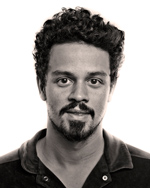
Jonathas de Andrade, Brazil, the Special Prize winner
Jonathas de Andrade was born in 1982 in Maceió and lives and works in Recife, Brazil. De Andrade’s work has been commissioned for significant group exhibitions including the 29th Biennial of São Paulo (2010), the Sharjah Biennial 10 (2011), the 12th Istanbul Biennial (2011) and The Ungovernables, New Museum Triennial, New York (2012).
Jonathas de Andrade researches decaying systems and waning ideologies, reconstructing them through various means of documentation and archiving. From this process he develops conceptual installations that reflect on forms of cultural amnesia in which social, political, cultural and ideological issues vanish from the collective memory. A key focus for de Andrade is the now obsolete “tropical modernism”, the architectural translation of a failed system aimed to establish social equality.
For the PinchukArtCentre de Andrade has created a new work based in his exploration of tropical modernism. He has taken a decayed tile wall from a typically modernist house to build a conceptual installation that reflects on this forgotten ideology and follows the question if this wall is an original modernist design or a period copy after the fashions of a later day.
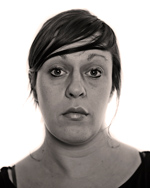
Meris Angioletti, Italy
Meris Angioletti was born in 1977 in Bergamo, Italy. She is based in Paris and Milan. Angioletti graduated in Fine Arts from the Brera Academy in Milan. She was awarded the Premio New York/ISCP Residency (2009–2010) and the DRAC Aide Individuelle à la creation (2011). In 2011 Angioletti had solo exhibitions at Galleria Arte Moderna in Turin and La Galerie, Noisy-le-Sec. Her group exhibitions include the 54th Venice Biennale in 2011 and 30th Biennial of São Paulo in 2012.
At the heart of Meris Angioletti’s artistic practice stands what she calls the “circumstantial paradigm”, an idea from which she developed a research system to aid her examination of trace evidence. Her video and projection work is positioned between art and science, exploring the perceptive capabilities of the viewer, memory and the subconscious and the relations between physical and mental space. Angioletti experiments with the theory of expanded cinema; she explores the influence editing and colour have on the narrative of images, the readings they offer as well as the associations they carry. To that end, much of her work is language-based.
The new installation Angioletti has created for the PinchukArtCentre centres on a projection in which she gathers various medial aspects of her research, including narrative, editing, light and language.
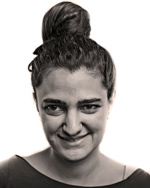
Marwa Arsanios, Lebanon, the Special Prize winner
Marwa Arsanios was born in 1978 in the USA. She lives and works in Beirut, Lebanon. Arsanios obtained her MFA from the University of the Arts, London, in 2007 and currently is a researcher in the fine arts department at the Jan van Eyck Academie, Maastricht. She has been granted the artist’s residency at the Arab Image Foundation, Beirut, in 2009 and the research residency at the Tokyo Wonder Site in 2010. She participated in numerous group exhibitions including No Soul forSale, Tate Modern, London (2010), the 12th Istanbul Biennial (2011) and the Liverpool Biennial (2012).
Through a strategy of collecting and archiving, Marwa Arsianos examines historic traces relating to the modernization of the Arabic states in the 1960s. Her focus is on urban planning in Lebanon’s capital Beirut, where she reinterprets buildings, publications and events in a process of study and appropriation. Hovering on the boundary between reality and fiction, the resulting work is a series of archival installations, texts, films and performances that reflect on the contemporary politico-social issues in the Middle East from a historical perspective.
For the PinchukArtCentre Arsianos continues her ongoing research into Al Hilal, a left-wing journal widely read in the Arabic world in the 1960s, which featured radical political texts. In spite of its great popularity, its contents never lead to much action. Arsianos exhibits her own Al Hilal journal in a dynamic performance installation, which centres on a complex process of collecting, appropriating, reinterpreting and reading.
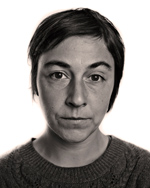
Micol Assael, Italy, the Special Prize winner
Micol Assael was born in 1979 in Rome, Italy. She currently lives and works in Greece and Rome. She had solo exhibitions at Kunsthalle Basel (2007) and at Palais de Tokyo, Paris (2009), and group exhibitions including the 28th Biennial of São Paulo, ...5 Minutes Later, KW Institute for Contemporary Art, Berlin, and Italics, Palazzo Grassi, Venice (all 2008). Berlin Biennale (2006), Venice Biennale (2003/2005), the Moscow Biennale (2005).
Micol Assaël’s sculptural work develops from natural phenomena that can normally be perceived through coincidence only. These phenomena function according to invisible laws and principles, which Assaël attempts to reconstruct in her research with the assistance of scientific and technological experts. The sculptural outcome is an almost technological object or installation that makes the invisible “tangible”. Her work directly engages the viewer who completes it by perceiving the invisible.
The PinchukArtCentre shows a newly created video piece by Assaël, marking a new direction in her oeuvre. The performative function of the spectator as well as the research process necessary to unveil the invisible principles and laws behind the physically recognizable world still continue to play key roles in this work.
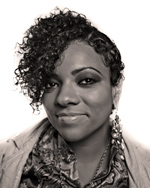
Abigail DeVille, USA
Abigail DeVille was born in 1981 in New York City, USA. She earned her BFA from the Fashion Institute of Technology and attended Skowhegan School of Painting & Sculpture on the Camille Hanks Cosby Fellowship Award. In 2010 she was artist in residence at Recess Activities Inc. in New York, Marginal Utility in Philadelphia and The Bronx River Art Center, New York. Abigail DeVille is a 2011 MFA recipient in Painting from the Yale School of Art. Her work has been commissioned for the group exhibition The Ungovernables, New Museum Triennial, New York (2012).
Abigail DeVille creates archaeological constructs full of cultural and historical references. Her dark sculptural installations steeped in “destruction” and “decay” are a reflection on social repression, racial identity and discrimination in the ruinous decadence of the big city. With building waste and rubbish from the streets, which she incorporates as found objects and “intergenerational debris”, DeVille builds black holes and vortexes like metaphorical time warps. In the periphery of this constructed decay, or once through the vortex, we meet lost individuals, grotesque parodies of how blacks were perceived in the American past.
For the PinchukArtCentre DeVille has created a new installation, a vortex representing street life based on Claes Oldenburg’s found object environment The Street at the Judson Gallery in New York 1960.
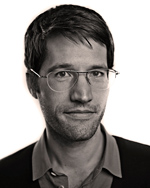
Aurelien Froment, France
Aurelien Froment was born in 1976 in Anger, France. He lives and works in Dublin and Paris. Froment graduated from Manchester Metropolitan University in 1999 and the École Régionale des Beaux Arts, Nantes, in 2000. He worked for ten years as a projectionist while becoming an artist. Aurelien Froment has exhibited in many solo and group exhibitions at Palais de Tokyo, Paris (2008), the Kunsthalle Basel (2008), the Gwangju Biennale (2010) and the Lyon Biennale (2011).
Aurelien Froment’s artistic process starts from a single object which serves as a model for a specific moment in its existence, reconstructing the history of this object through language. The process of reconstruction is not linear, instead Froment creates a network of associations and juxtapositions which analyze the archaeology of the object, revealing its trajectory in time and space. The language selected by Froment, its structure and sound, create a tension with the image that develops into an interaction of meanings and connections, subjecting the image to a continuous flux of interpretation.
For the PinchukArtCentre Froment has merged three individual films into one new 3-channel work, radicalizing the complexity, the associations and interpretations offered by each work on its own.
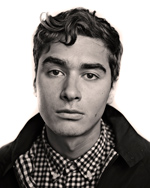
Mykyta Kadan, Ukraine
Mykyta Kadan was born 1982 in Kyiv, Ukraine, where he lives and works today. In 2007 he graduated from the National Academy of Art and Architecture in Kyiv. He is a painter, graphic artist, author of objects and installations. Kadan was nominated for the PinchukArtCentre Prize in 2009 and won it in 2011. His work has been exhibited nationally and internationally, including exhibitions at the Index Contemporary Art Centre, Stockholm (2008), the first Kyiv Biennale at Art Arsenal and at Lavra Gallery, Kyiv (both 2012).
Mykyta Kadan combines intellectual reflection with continuous social engagement, using his artistic practice to act in the socio-political discussions in Ukraine. With a strong historical awareness, Kadan focuses his research on the urban transition of Kyiv, a city in continuous transformation losing its historical roots and its public spaces to commercialism. Kadan works mostly in painting and sculpture, and in his use of abstraction and modelling he references the Russian avant-garde movements from the turn of the 20th century.
For the PinchukArtCentre Kadan has created a monument for the worker as a reflection on the shifting social role of the worker within the new capitalist environment in Ukraine. On the other hand the installation opens a critical discourse on the fictive heroical position that workers held in the Soviet past.
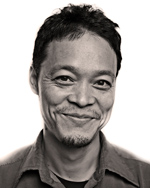
Meiro Koizumi, Japan, People’s Choice Award Winner
Meiro Koizumi was born in 1976 in Gunma, Japan. He lives and works in Yokohama. He studied at the International Christian University, Tokyo, at Chelsea College of Art and Design, London, and at the Rijksakademie van beeldende Kunsten, Amsterdam. He won the First Prize at the Beck’s Futures student’s film and video award in London in 2001. Koizumi’s work has been shown in group exhibitions including New Contemporaries, Barbican Centre, London (2002), Art Summer University, Tate Modern, London (2007), and the Liverpool Biennial (2010). In 2009 he had a solo exhibition at Mori Art Museum, Tokyo.
In his films Meiro Koizumi examines the psychological complexities that come with the concept of individual guilt, usually determined by social structures and behavioural patterns. His films are deeply rooted in the Japanese social and cultural tradition. During the filming Koizumi aims to capture explicit emotions. This can result in almost melodramatic films that balance on the edge between fiction, performance and documentary. On a deeper level, Koizumi breaks through traditional communication patterns revealing the restraints embedded in their form.
For the PinchukArtCentre Koizumi has chosen a combination of three works, including one new video piece. All three share a common theme of self-sacrifice for the mother nation. Koizumi shows the stoic behavioural patterns that we would expect to see in this context and goes deeper in search of personal emotion, black humour and guilt.

Andre Komatsu, Brazil
Andre Komatsu was born in 1978 in São Paulo, Brazil. He currently lives and works in São Paulo. He received a BA in Fine Arts from Fundação Armando Álvares Penteado in 2002. In 2009 he took part in an international residency programme at the Bronx Museum, New York. Komatsu’s work has been shown in numerous group exhibitions including Ponto de Equilíbrio, Instituto Tomie Ohtake, São Paulo (2010) and The Peripatetic School, Drawing Room, London (2011).
The duality between power and its subversion is an inherent part of André Komatsu’s artistic strategy. His installations are both subversive and poetic, drawing from everyday observations in an urban context. Komatsu reconstructs these observations in a visually purified manner, with a bold strategic intervention which leads to an ironic undermining of the transformed construction itself. The reconstructions are reflections on power structures that build on order and strength and will become “ruined” by the details of their own transformation.
For the PinchukArtCentre Komatsu has created two new installations. Anamorfose systematica and Systemas Valores (both 2012) offer abstractions of socially accepted value systems, which have lost their validity but still continue to be observed in certain political, economic and social contexts.
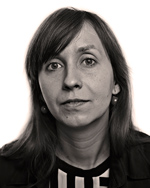
Eva Kotatkova, Czech Republic
Eva Kotatkova was born in 1982 in Prague, Czech Republic. From 2002 to 2008 she studied at the Academy of Fine Arts and the Academy of Applied Arts in Prague, at the San Francisco Art Institute and the Akademie der Bildenden Künste in Vienna. Since 2009 she is doing her doctoral studies at the Academy of Applied Arts in Prague. In 2007 Kotatkova won the J. Chalupecký Award for Young Artists and the J. Hlvka Award. Her most significant group exhibitions include the Liverpool Biennial in 2010 and the 18th Biennale of Sydney in 2012.
Eva Kotatkova’s artistic practice has a wide scope, ranging from works on paper to social interventions, performances and sculptures. In these different media, Kotatkova reflects on social rules, expectations and propaganda strategies, which impose restrictive structures on the individual. Her fascination with social control and manipulation develops through an archive of appropriated objects and stories and leads into a process of deconstruction and reconstruction. In Kotatkova’s complex installations, each story or object is redefined to reflect a hidden “trauma”.
Kotatkova’s new installation for the PinchukArtCentre can be seen as a theatre of objects. Eleven sculptures each conceal one individual story about social exclusion and isolation. The anonymity of the sculptural objects turns these stories into abstractions that reflect on the failure of societal systems and social structures.

Tala Madani, Iran
Tala Madani was born in 1981 in Tehran, Iran. She lives and works in Los Angeles. In 2003 Madani received her BA in Visual Arts from Oregon State University. In 2006 she got her MFA in Painting from the Yale University School of Art and a Visual Arts Fellowship at the Fine Arts Work Centre, Provincetown. Madani’s work has been commissioned for significant group exhibitions including the 6th Liverpool Biennial and at the P.S.1 Contemporary Art Centre, New York, in 2010. A forthcoming solo exhibition will take place at the Moderna Museet, Malmö, in February 2013.
The subject matter of Tala Madani’s paintings mainly consists of men from the Middle East subjecting themselves and other men to fictional homoerotic sexual acts, torture or humiliation. Full of humour and irony, her paintings venture on a culturally confrontational discourse. Madani herself qualifies this as fascination for the male phenomenon. Her painting style is brutal, with intense colours and only the most necessary forms. Her large works create a sense of spatiality within abstraction and they reflect on “mass behaviour”. The smaller works focus on “private behaviour” and it is easier to read them as small narratives.
For the PinchukArtCentre Madani has created three large-format paintings, combining them with a series of animated films, which bring the themes of her paintings alive.
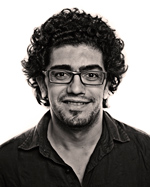
Basim Magdy, Egypt
Basim Magdy was born in 1977 in Assiut, Egypt. He lives and works in Cairo. Magdy studied at the Faculty of Fine Arts at Helwan University, Cairo, from 1996 to 2000. He took part in numerous international group exhibitions including One Day We Will Shine like the Stars, Kunsthalle Wien, and Recontres Internationales, Centre Pompidou, Paris (both 2011), La Triennale, Palais de Tokyo, Paris, and Transmediale, Haus der Kulturen der Welt, Berlin (both 2012).
Basim Magdy has a wide range of work reaching from painting to filmmaking and photography. His work holds the balance between fiction and reality by manipulating the reading of images or disrupting the logical narrative. Magdy uses humour and absurdity as central strategies to develop a critical discourse on how informational systems are used to influence us or create propaganda.
For the PinchukArtCentre Magdy has created a special site-specific project in a street window of the PinchukArtCentre, reflecting on the function and identity of this public-private space. This work is combined with the ongoing series “with every subtle gesture”, in which Magdy combines a series of images and abstracted sentences exploring the idea of reading and associative thinking through the creation of fictional narratives.

Ahmet Öğüt, Turkey, the Special Prize winner
Ahmet Öğut was born in 1981 in Diyarbakır, Turkey. He lives and works in Amsterdam and Istanbul. Öğüt graduated from the Painting Department of the Faculty of Fine Arts at Hacettepe University, Ankara, in 2003 and completed his MA at the Faculty of Art and Design at Yıldız Technical University in 2006. In 2010 Öğüt received the Kunstpreis Europas Zukunft from the Galerie für Zeitgenössische Kunst in Leipzig. His work has been shown at the 5th Berlin Biennial for Contemporary Art (2008), the 53rd Venice Biennial (2009), the 12th Istanbul Biennial and 4th Moscow Biennial (2011).
With his drawings, installations, performances and films Ahmet Öğut reflects on movements, conflicts and innovations in the global economic and geo-political space. Öğut always starts from or refers to his own well-defined context as a Turkish-Kurdish artist. He explores basic principles of time, distance and speed and uses humour and irony as an essential artistic strategy in his politico-cultural critical discourse.
For the PinchukArtCentre Öğut has created a new work that reflects on and participates in the idea of “open source”. This principle means that all research and innovation are public and can be used by everybody, a strategy opposed to personal copyright and patents. Öğut explores how such a network could exist beyond the digital realm.
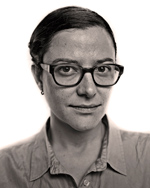
Amalia Pica, Argentina
Amalia Pica was born in 1978 in Neuquén (Patagonia), Argentina. She lives and works in Patagonia and London. Pica received her BA from the Escuela Nacional de Bellas Artes Prilidiano Pueyrredón, Buenos Aires, and moved to the Netherlands in 2004, where she had a two-year residency at the Rijksakademie van beeldende Kunsten, Amsterdam. Her recent solo exhibitions include Malmö Konsthall (2010) and Chisenhale Gallery, London (2012). Pica exhibited in many group exhibitions including at Stedelijk Museum, Amsterdam (2007), Hayward Gallery, London (2010), the 54th Venice Biennale and the Kunsthalle in Vienna (2011).
Amalia Pica’s oeuvre is a poetic visual translation of social and political systems, which she abstracts into conceptual sculptures, installations or works on paper. A lot of her work seems to resemble incomplete performances, reflecting on concepts of presence and absence, appearing and disappearing. In her exhibitions, Pica strategically combines and recombines different works, building a subtle suspense where each piece affects the one next to it. In this way, Pica engages the viewer, whose movements play an essential role in establishing the meaning of the work.
For the PinchukArtCentre Pica has created an installation which combines her recent sculpture Radar Construction with two specially created works. The idea of the performative is central to the installation, both from a conceptual viewpoint and for the role ascribed to the viewer.
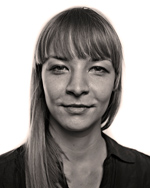
Agnieszka Polska, Poland
Agnieszka Polska was born in 1985 in Lublin, Poland. She lives and works in Berlin and Cracow. Polska graduated from the Academy of Fine Arts in Cracow and from the Universität der Künste, Berlin. She first began exhibiting her works in Cracow in 2007. Since then she has participated in group exhibitions at KW Institute for Contemporary Art, Berlin, in 2010 and 2011 and Tate Modern, London, in 2012. Polska won the Grand Prix in the Geppert Award 2011 for her video piece How the Work Is Done.
The specific visual language of Agnieszka Polska’s films has been developed out of animation techniques. Some images are literally taken from or inspired by the art-historical tradition, at other times the filmed image is transformed by animation. Polska combines this visual style with an exploration of narrative possibilities, often focusing on an artist figure, as self-reflection or tribute to largely forgotten Polish avant-garde artists. At the same time Polska’s work is a reflection on a social-societal context which grows out of personalized stories.
For the PinchukArtCentre Polska has created a new multi-channel film installation which balances between the sculptural impact of the installation and the visual power of her filmic language.
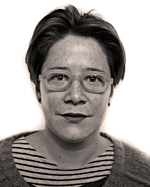
Emily Roysdon, USA
Emily Roysdon was born in 1977 in Easton (Maryland), USA. She lives and works in New York and Stockholm. Roysdon completed the Whitney Museum Independent Study Programme in 2001 and an MFA at the University of California, Los Angeles, in 2006. She has received grants from Art Matters (2008), Franklin Furnace (2009) and the Rhema Hort Mann Foundation (2010). For six months in 2008 she was a resident at the International Artists Studio Programme in Stockholm, Sweden. Roysdon’s work has been exhibited internationally at New Museum, New York (2009), Konsthall C, Stockholm (2010), Tate Modern, London, and the Institute of Contemporary Arts, London (2012).
Emily Roysdon’s work is not limited to the visual arts but includes writing, curating and organizing, a position between the chairs which she has outlined in her 2009 essay/manifesto “Ecstatic Resistance”. Roydon is fascinated by the idea of “movements” in the physical, intellectual and philosophical sense, and her own work also involves political positioning. Her artistic oeuvre can be situated at the crossroads of photography, performance and choreography.
For the PinchukArtCentre Royson has created a new installation, a combination of photography, sound and film. The work starts from a choreography that explores how a single movement can develop itself, and how the space in which movements unfold defines the interpretation of a work.
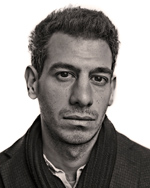
Rayyane Tabet, Lebanon, the Special Prize winner
Rayyane Tabet was born in 1983 in Ashqout, Lebanon. He received a Bachelor in Architecture from the Cooper Union and a Master in Fine Arts from the University of California, San Diego. His work has been featured in Art Now in Lebanon, Darat al Funun, Amman (2008) and in the book Younger than Jesus: The Artist Directory, published by Phaidon Press (2009). Tabet was included in Plot for a Biennial, Sharjah Biennial 10 (2011) and The Ungovernables, New Museum Triennial, New York (2012).
Rayyane Tabet’s artistic practise starts from personal objects that offer a reflection on the social and historical context of life in Lebanon. The artist reveals the hidden history of these objects by recreating and transforming them. He abstracts the personal experience, so the object’s underlying personal memories solidify into a social memory, of the kind that made an impact on the development of Lebanon’s shifting society.
Following a childhood memory, Tabet has created a new installation for the PinchukArtCentre that consists of a field of over 4,000 wood block toys cast in concrete. The work lives from a poetic tension between the fragile building blocks and the stability and strength of the material. The multiplication of this toy set means an abstraction of the personal memory. On the one hand it suggests building an eternal ruin, on the other the ossification of child-like imagination.
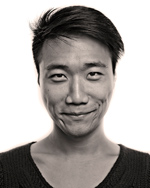
Yan Xing, China
Yan Xing was born in 1986 in Chongqing, China. There he graduated from the Sichuan Fine Arts Institute in 2009 with a BFA. He lives and works in Beijing. Yan exhibited in many group exhibitions including at Contemporary Arts Museum Houston, Houston (2012), Today Art Museum, Beijing (2012), National Gallery of Indonesia, Jakarta (2011), Chinese Arts Centre, Manchester (2010). He has also been featured at Moscow International Biennale for Young Art (2012), Shenzhen Sculpture Biennale (2012). In 2012 he was a finalist in the “Focus on Talents” by the Today Art Museum and Martell Art Fund.
After Yan Xing had studied traditional painting he started to focus on performance art early in his artistic development. In his performances, he combines a pure visual aesthetic with the talent of a master storyteller. He interweaves a personal narrative with Western art-historical reflections and associates the Chinese artistic tradition with individual trauma to build his stories. Key themes in his work are his open homosexuality and notions of voyeurism.
For the PinchukArtCentre Yan Xing has created a new work which tackles modernism, Richard Hamilton, Ernest Hemingway and traditional Chinese song. The continuous performance is multilayered and builds on the symbolism and the theme of voyeurism which permeate his work.

Lynette Yiadom-Boakye, UK, the Main Prize winner
Lynette Yiadom-Boakye was born in 1977 in London, UK. She lives and works in London. Yiadom-Boakye attended Central Saint Martins College of Art and Design, Falmouth College of Arts and the Royal Academy Schools. She took part in numerous group exhibitions including the 7th Gwangju Biennale (2008), Secret Societies, Schirn Kunsthalle, Frankfurt am Main, the 11th Lyon Biennial of Contemporary Art (all 2011), and The Ungovernables, New Museum Triennial, New York (2012). In 2012 Lynette also had a solo exhibition at Chisenhale Gallery, London.
Painting black people for Lynette Yiadom-Boakye is something completely natural that has come to carry a political meaning. Her figures, always either fictional or anonymous, emerge during the act of painting which usually does not take her longer as a day for each picture. “It’s about a certain kind of urgency and capturing that time frame,” Yiadom-Boakye herself describes the process. Most of her paintings come in work groups, which is also relevant in terms of presentation. The changing combination of paintings suggests a narrative which remains undefined by the artist and can thus be fleshed out by the viewer’s interpretation.
For the PinchukArtCentre Yiadom-Boakye has specially created a new series of paintings.
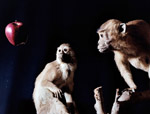
Gusmao+Paiva, Portugal
JOÃO MARIA GUSMÃO + PEDRO PAIVA both were born in Lisbon, Portugal, where they currently live and work. They have collaborated since 2001. Solo exhibitions took place at Kunstverein Hanover, the Portuguese Pavilion at the 53rd Venice Biennale (both 2009) and Kunsthalle Düsseldorf (2011). Gusmão and Paiva also participated in significant group exhibitions such as the 27th Biennial of São Paulo (2006) and the European Biennial of Contemporary Art, Rovereto (2008).
João Maria Gusmão + Pedro Paiva work between two opposite poles: technological and scientific developments and the rediscovery of mysticism. They draw inspiration from the texts of René Daumal, the founder a fictional field of study called Abissology, which focuses on the idea of an abyss. In a series of films that combine illusion, mysticism and magic, Gusmão + Paiva show a fundamental distrust of our perceptive capabilities. Their at times surreal “imagery” is building on a network of art-historical, filmic and photographic associations which not only reflect on the subject matter but also on the technical developments of photography and film as a medium enabling scientific breakthroughs.
For the PinchukArtCentre Gusmao + Paivo have made a new 16-mm film which they show in combination with older films and a recent camera obscura work.
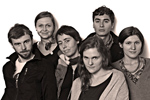
R.E.P., Ukraine
R.E.P. (revolutionary experimental space) was founded in 2004. Since the beginning of 2006, the group includes six artists: Lesia Khomenko, Mykyta Kadan, Zhanna Kadyrova, Ksenia Gnylytska, Lada Nakonechna and Volodymyr Kuznetsov. In the same year, R.E.P. started its own curatorial programme named “Shtab” (Headquarters). In 2008 it initiated HUDRADA, a curatorial collective based on interdisciplinary communication. The artists had solo exhibitions at PinchukArtCentre, Kyiv (2008), and the Kunstraum in Munich (2010). R.E.P. participated in group exhibitions at the Kunsthalle in Vienna (2005), the 52nd Venice Biennale (2007) and White Box, New York (2010).
Much of R.E.P.’s work takes on the form of social activism, accompanied by a critical artistic and intellectual discourse. The group uses films, installations and performances to reflect on the social-cultural and political context in Ukraine. Within the undefined and still developing social environment, there is a search for an own Ukrainian cultural identity together with a yearning for Western values and structures. R.E.P. explores specific cultural and architectural trends in Ukraine from that tension field between the West and an own cultural context with a sense of humour and deep irony.
For the PinchukArtCentre R.E.P. continues the group’s idea of Euro Renovations with a new installation, which explores the ways post-Soviet spaces are converted following an aesthetic that from an old soviet perspective appears to be in a Western style.
